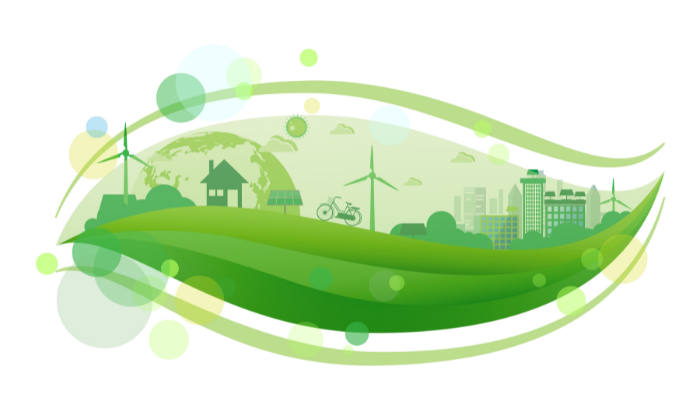There’s undeniable evidence that India is going through a technological transformation at extraordinary speed. This is an excellent time to refresh our knowledge about how our spending and purchasing behaviour, especially when enabled by technology, marks a changing shift in the economy. According to India Brand Equity Foundation’s Science and R&D Industry report, IT spending in India had been predicted to grow 7% YoY to reach US $101.8 billion in 2022. But, with unprecedented growth comes a heavy price we must pay.
The Department of Information Technology estimated that India generated 8 lakh MT of e-waste in 2012. A number that has only seen a steep rise. While it may not be possible to completely end the use of hydrocarbons immediately, transitioning to clean energy sources is an important step towards reducing our dependence on fossil fuels and mitigating the impacts of climate change. Clean energy generation is a means to raise global awareness about consumer rights and needs, and we must use it to our advantage to be well-informed and, most importantly, responsible consumers taking care of the planet. We must also take active steps towards sustainable consumption as creators, users, and enablers of technology.
You might also be interested to read: Transforming To ‘Smart Staffing Structure’ From Traditional Structure
The hazardous e-waste saga
E-waste isn’t just a concern in India – it’s a problem plaguing the world. A Platform for Accelerating the Circular Economy (PACE) report supporting the United Nations E-Waste Coalition stated that global e-waste production will reach 120 million tonnes annually by 2050 if we don’t mend our ways.
E-waste produced annually is worth over $62.5 billion. That’s more than the GDP of most countries. These numbers pose a bigger problem: impacting our health and our children. E-waste is hazardous in many ways. The components that go into making electronic devices such as laptops, cell phones, and televisions contain metals that are detrimental to human health in the long run. Children of disadvantaged communities have no choice but to spend their days living and playing around e-waste recycling centres. We must take urgent measures to live better and be responsible as consumers. While there may appear to be a contradiction in the demands of activists to move to clean energy and end the use of hydrocarbons, it is important to consider the urgency of the climate crisis and the long-term benefits of transitioning to clean energy sources.
Gathering dust and untapped potential
Deloitte’s Consumer Trends 2022 report highlights that smartphones produce 83% of emissions in the first year, most of which comes from manufacturing. But, we’ve gotten into the unhealthy and planet-unfriendly habit of switching to new devices every few years.
Most of us don’t trade older devices, nor do we dispose of them in safe and eco-friendly ways. We let them sit in our cupboards for years, gathering dust. The more we buy, the more we waste. We chase the glamour of a new phone, the shiny surfaces, and the latest in technology, but what are we doing to control or, better yet, reverse the damaging effects of unchecked e-waste?
Clean energy generation: What can we do?
Here’s how we can manage our e-waste better:
Re-consider that new purchase: Retail therapy can be an incredible stress buster and buying presents for someone can make both parties happy–but what if it’s an electronic device or gadget in question? If you’re buying for yourself, take a step back, sleep over it, and ask yourself if you really need the shiny new gadget. The more electronic gadgets, the more carbon emissions.
Actively hunt for eco-friendly products: If you research well, many other energy conserving devices are up for sale. It isn’t only our washing machines or our refrigerators that boast of energy-saving qualities. Always look for Energy Star-labelled products and or products that are certified by the Electronic Product Environmental Assessment Tool (EPEAT).
Donate old and unused devices: Provided that your electronic gadgets and devices are still in working condition, and you feel like it may help someone in need, donate them. You can donate your old phones, laptops, and the like to domestic violence abuse victims, children’s safety initiatives, and those fighting for environmental causes.
Recycle old cell phones safely: One of the best ways to reuse smartphones is by trading your older one with the smartphone company for a new one. If your smartphone is inactive but hoards tons of personal data and information, clear it out and keep it clean and safe. Data such as pictures, files, and videos stored in cloud services also produce a significant amount of carbon emission. As a responsible consumer, you must keep clearing out space.
Let’s take a pledge to be better consumers and better citizens. With the advent of ground-breaking technology changing the very way to buy, work, consume, and live and with infinite reserves of information available at our fingertips–being reckless as consumers is simply not a choice. Let’s save the world we live in as citizens first and consumers second.
References:
- India Produced 3.2 Million Tonnes Of E-Waste Last Year, Actionable Plan Required To Attain SDG 12 Targets: Study | The Logical Indian | January 25, 2022
- Sustainable Consumption and Production, A Consumer Perspective | CUTS International | March 2021
- SCIENCE AND R&D INDUSTRY REPORT | IBEF | November, 2022
- UN report: Time to seize opportunity, tackle challenge of e-waste | UN Environment Programme | January 24, 2019
- A New Circular Vision for Electronics Time for a Global Reboot | PACE | January, 2019
- E-waste: An Emerging Health Risk | National Institute of Environmental Health Sciences
- Digital Consumer Trends 2022 | Deloitte
- 6 ways to minimise your e-waste | Harvard University Sustainability
You might also be interested to read: Renewable Energy Sector Jobs in India






